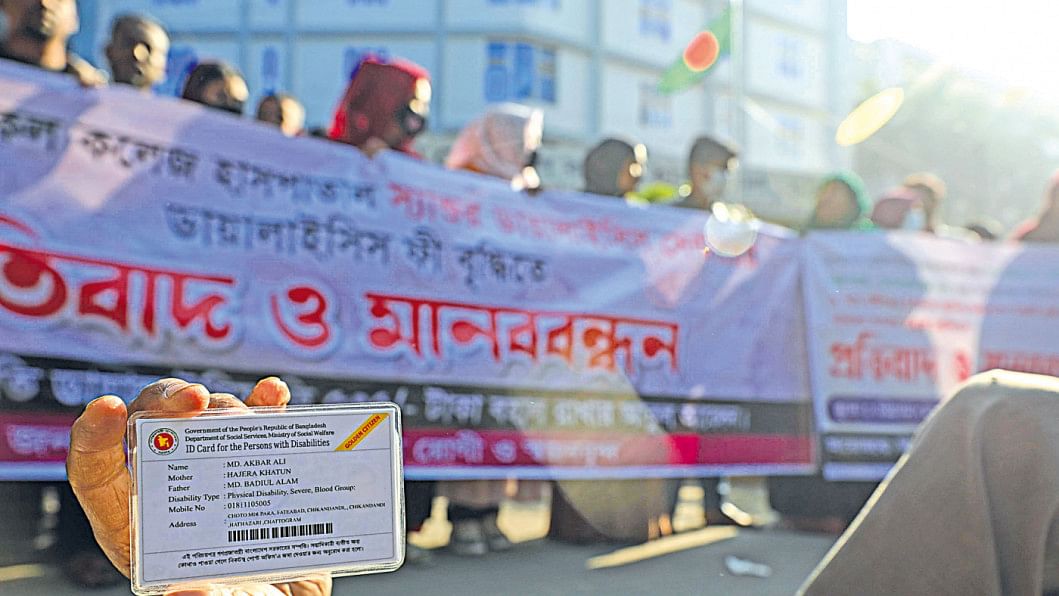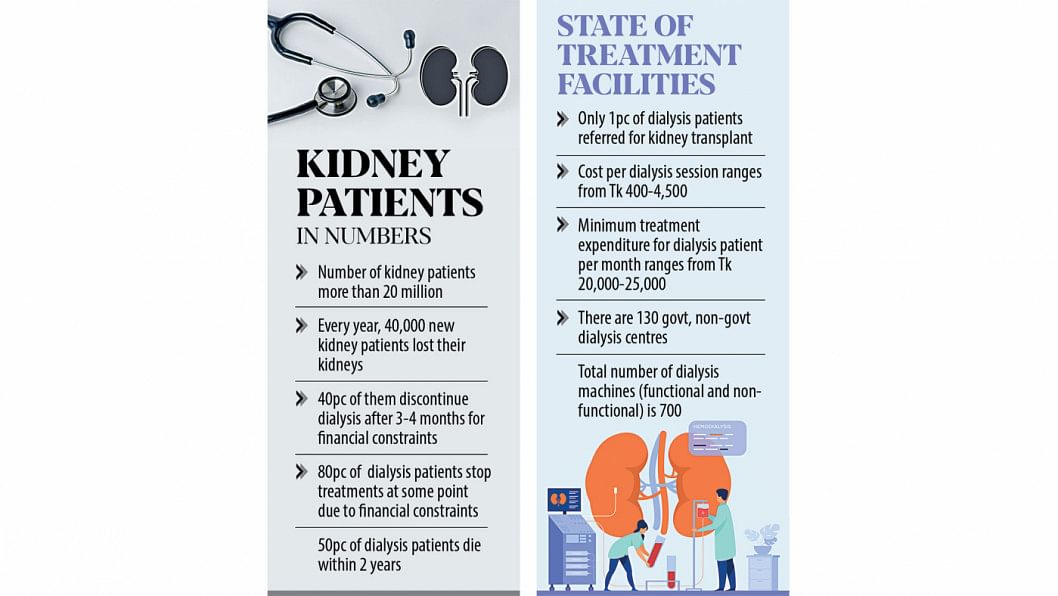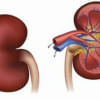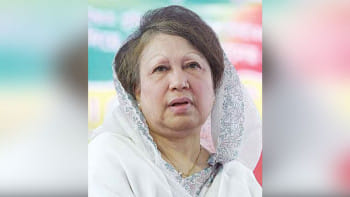The ordeal of patients with chronic kidney diseases

Four years ago, Md Tobarok Hossain left for Malaysia to work as a labourer on a palm oil plantation. He consciously accepted the brutal life of a plantation worker, only because he wanted to give his family a better life.
Tragically, Tobarok's fate took a different turn in April last year. He was forced to return home as he had become partially paralysed. After multiple tests in various hospitals, the prognosis was devastating. Both of his kidneys were damaged and had lost about 80 percent of their function. It meant that the only way he could survive would be to get dialysis three times a week.

The cost of his treatment has placed a heavy burden on his family. So far, he has already spent Tk one million on dialysis at various private hospitals. The family's savings and income are running out fast and they cannot keep up with the soaring costs of Tobarok's treatment.
"We don't know for how long we can continue his treatment. We have already sold all our assets and my ornaments. I wish I could donate my kidney to my husband but that too would require a lot of money."
"We don't know for how long we can continue his treatment," said Halima, Tobarok's wife. "We have already sold all our assets and my ornaments. I wish I could donate my kidney to my husband but that too would require a lot of money."
Tobarok is just one of more than 40,000 patients in Bangladesh who suffer from kidney failure every year.
According to a recent study conducted by nephrologists of Shaheed Suhrawardi Medical College, around 40 percent of these patients cannot afford dialysis at all and 90 percent of them discontinued treatment after three to four months. Roughly 50 percent of these patients die within two years of kidney failure.
Kidneys work as filters that remove wastes, extra fluids, and acids from the body and maintain a healthy balance of water, salts and essential minerals. Kidneys also produce a vital role in producing red blood cells. Thus, when such crucial organs are irreversibly damaged, the only option is to artificially remove the wastes through dialysis. The machine that performs the dialysis is called a dialyser and is more commonly known as an "artificial kidney".
Besides dialysis, such patients also need expensive medicines to maintain blood generation and circulation, and a healthy, nutritious diet.
"Many of these patients are often treated as burdens and suffer from deep depression during the terminal stages of their lives."
Experts say continuing dialysis is expensive and most patients just cannot afford it.
"In Bangladesh, more than 20 million people are suffering from different types of kidney diseases, many of whom require dialysis at one point in their life. Every year, around 40,000 patients suffer from kidney failure. Again, more than 20,000 chronic kidney failure patients die as they cannot afford dialysis or kidney transplant," said Professor Dr Harun Ur Rashid, founder of Kidney Foundation hospital.
"Many of these patients are often treated as burdens and suffer from deep depression during the terminal stages of their lives," he added.
Unfortunately, there is no government-determined fee for kidney dialysis. In government and non-government hospitals, the cost of a single dialysis can vary from Tk 400 to Tk 4,500. However, patients have to purchase medicines, and necessary equipment at their own cost, which adds to the overall expenditure. Most of these patients usually require dialysis twice or thrice a week.
Gonoshasthaya Nagar Hospital -- a non-profit, charitable hospital -- has been conducting dialysis for poor patients at only Tk 500 per session. They also provide food for these patients during dialysis.
Professor Brigadier General (Retd) Mamun Mostafi, head of Nephrology of Ganashasthaya Nagar Hospital, said, "Even the ultra-poor patients who take dialysis at the rate of Tk 500 per session have to spend a minimum of Tk 20,000 per month only for the treatment cost. Annually, they have to spend Tk 300,000 to Tk 400,000. Most families cannot bear this expenditure. As a result, most patients cannot continue dialysis."
"It is vital to strengthen our social security programmes for patients suffering from kidney failure. Since most of the equipment needed to treat them has to be imported, it is very difficult to reduce the treatment costs unless the patients or the treatment centres receive donations. These donations can be obtained from zakat funds, tax exemptions and CSR funds among others."
So why is kidney dialysis so expensive?
For one thing, there is an acute scarcity of dialysis facilities outside Dhaka. For another, the cost of importing equipment and some medicines are quite high. At present, there are 130 dialysis centres in all government and non-government hospitals. There are a total of 700 dialysis machines in the country, most of which are concentrated in Dhaka.
Outside Dhaka, dialysis can be only done in government medical college hospitals and a few tertiary-level hospitals. However, the number of machines and trained staff compared to the patients is far from adequate.
There are, for instance, only 17 dialysis machines in Bogura's Shahid Ziaur Rahman Medical College Hospital. The dialysis centre can conduct 32 dialysis sessions per day in two shifts. According to the hospital administration, on average, they can conduct 192 dialysis sessions per month. However, they register around a thousand patients who seek dialysis services. Patients have to wait for months to get a call for treatment.
Moreover, the dialysers in government hospitals are not in good condition.
Among the eight districts of the Rangpur division, the only state-run dialysis facility is available at Rangpur Medical College Hospital. The facility had 30 dialysers initially; currently, only 18 of them have been functional. However, on February 24, 2022, all 18 machines became damaged with catastrophic consequences for patients. The dialysers also need regular repair and maintenance as 10 of the 18 dialysers are more than 12 years old.
In 2021, a similar incident happened in Rangpur Medical College Hospital, when the centre could not provide dialysis for 20 days due to damaged machines, resulting in the death of 12 kidney patients.
Sher-e-Bangla Medical College Hospital in Barishal is running its dialysis centre with only 10 machines in need of frequent repairs. The hospital authority has purchased 10 more machines recently, that have remained unused for more than a month.
According to the hospital administration, those machines could not be installed due to inadequate space and trained staff.
The scarcity of trained professionals is also one of the major reasons why this treatment is unaffordable. According to Professor Mamun Mostafi, there are only around 300 nephrologists in the entire country to treat millions of kidney patients.
Kidney transplants have just recently started in the country and are still out of reach for most patients. According to the study mentioned above, only 1 percent of dialysis patients are referred for a kidney transplant.
Professor Dr Harun Ur Rashid said, "We could not expand dialysis facilities following the growing number of patients. With the existing facilities, it is impossible to treat 40,000 new kidney failure patients that are being added every year to the existing list of patients."
"With the existing facilities, we can provide dialysis facilities to only 20 percent of patients and the rest of them die prematurely without treatment. The government should encourage establishing more training centres to develop the capacity of the nephrologists and nursing staffers who will work in the dialysis centres," he added.
Professor Mostafi suggested some measures to reduce the cost of treatment of patients requiring dialysis.
"At Gonoshasthaya Nagar hospital, we reuse the entire dialysis set-up by applying a sophisticated technology called Automatic Reuse of Dialysers. According to the globally accepted standard, if the efficacy of the set-up is found 80 percent and above, we can reuse it," he said.
Gonoshasthaya has also introduced a health insurance scheme for patients through which they provide medicinal support, food support and other forms of support for poor patients.
"It is vital to strengthen our social security programmes for patients suffering from kidney failure. Since most of the equipment needed to treat them has to be imported, it is very difficult to reduce the treatment costs unless the patients or the treatment centres receive donations. These donations can be obtained from zakat funds, tax exemptions and CSR funds among others," commented Prof Mostafi.
He also suggested making some essential services such as transportation, utilities and lifesaving medicines free for dialysis patients.
Government officials are hoping that the scarcity of treatment facilities for chronic kidney patients will be resolved soon.
Dr Sheikh Daud Adnan, director (hospitals and clinics), Directorate General of Health Services (DGHS), said, "Thanks to the prime minister's special attention, the government has been implementing a project to establish a 10-bed dialysis centre in every district hospital and a 50-bed dialysis centre in medical college hospitals."
He informed that the government has taken up a project to establish a specialised hospital for cardiac and cancer patients in eight divisions, where a 70-bed dialysis centre will be established in each hospital.
"Besides, the government has been giving subsidies for a Public Private Partnership (PPP) project where patients are receiving dialysis facilities at a much-reduced rate," he added.

 For all latest news, follow The Daily Star's Google News channel.
For all latest news, follow The Daily Star's Google News channel. 







Comments